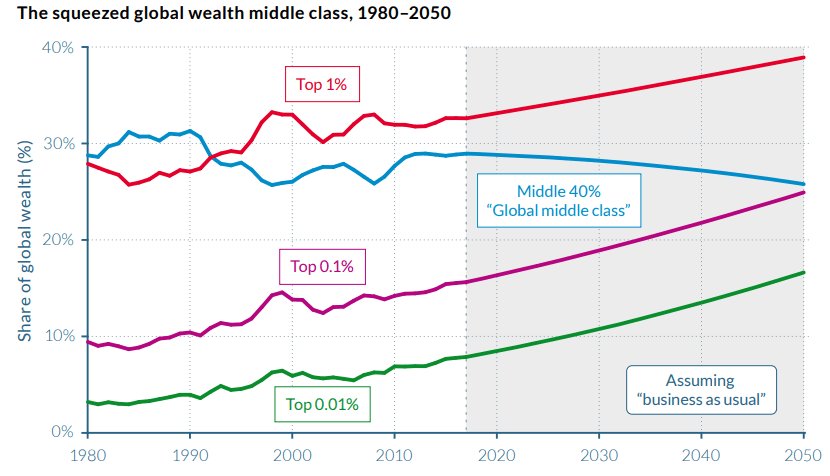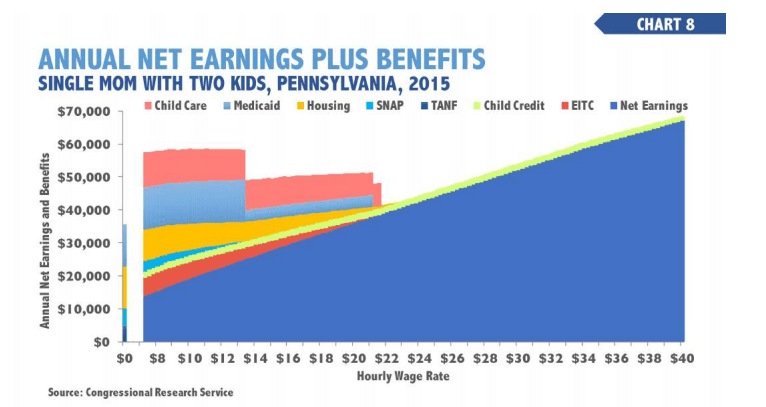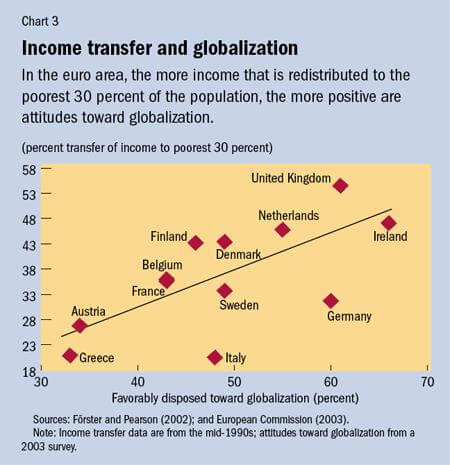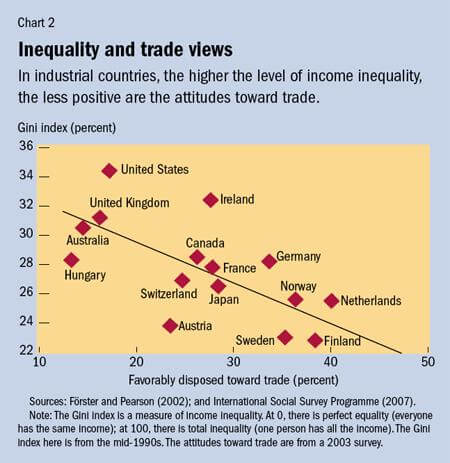Why Do We Need Extra Income?
Find 10 charts showing why we need extra income for a rainy day.
People Lost Jobs Under Lockdown
The ILO (International Labour Organisation) states that COVID-19 may deteriorate 305 million full-time jobs in 2q 2020. The same report said;
“The continued sharp decline in working hours globally due to the COVID-19 outbreak means that 1.6 billion workers in the informal economy – that is nearly half of the global workforce – stand in immediate danger of having their livelihoods destroyed, warns the International Labour Organization.”
In G7 countries, the unemployment spiked at the beginning of the lockdown and showed a recovery, as the below chart from the World Economic Forum shows.

Job Certainty is an Illusion
Before the coronavirus pandemic broke out, we knew that job certainty was an illusion, especially among middle-class people. We will show you several charts.
Income Inequality – Gini Index
Let me share a bit about World Income Inequality measured by the GINI Coefficient. What is the Gini Index? The Gini index or Gini coefficient is a statistical measure of distribution developed by the Italian statistician Corrado Gini in 1912. It is often used to gauge economic inequality, measuring income distribution or, less commonly, wealth distribution among a population. The coefficient ranges from 0 (or 0%) to 1 (or 100%), with 0 representing perfect equality and 1 representing perfect inequality.
Values over 1 are theoretically possible due to negative income or wealth.
Wikimedia Commons visualises the world GINI index by country as below;

It looks like the advanced countries are more equal than the emerging countries. However, this data is old (2006), and the significant trend is that the gap between the rich and the poor is becoming wider & broader, not only in the developing countries but also prominent in the advanced economies represented by the USA. The World Inequality Report 2018 indicates that income inequality has increased in nearly all world regions in recent decades, but at different speeds.
The top 1% of earners globally have captured twice as much growth as the 50% poorest individuals. Top 1% vs. bottom 50% national income shares in the US;

Importantly, the middle class has been most squeezed; The bottom 50% has enjoyed important growth rates. The global middle class (which contains the poorest 90% income groups in the EU and the United States) has been squeezed.

The Middle class, where the majority of us belong, is decreasing more and more, and many middle-class people are facing the risk of dropping into poverty. Nevertheless, you may say, “I have a daily job and earn enough money to live. Thus, I don’t need to work more for the second source of income.” Let me stress that we live in uncertainties. 1 in 7 workers was made redundant in the UK during the last financial crisis (2008).
Remember, the impact of the recession in the UK was relatively mild among the developed countries. Only 20% of people made redundant could find a new job within 3 months, and 75% were paid less in their next job. This is the harsh reality. The economy is cyclical, and the bubble will burst at any time, despite the unprecedented coronavirus pandemic.
It means your life is constantly exposed to the threat of losing a job. Still not convinced? With further numbers and different perspectives, let me substantiate how the middle class should feel a pinch and a sense of urgency.
The Middle Class Is Really In Danger
World Inequality in Wealth Distribution
The above World Inequality Lab report says,
The global wealth middle class will be squeezed under ‘business as usual.
* Rising Wealth inequality within countries has helped to spur increases in global wealth inequality. If we assume the world trend is captured by the combined experience of China, Europe, and the United States, the wealth share of the world’s top 1% of the wealthiest people increased from 28% to 33%. In comparison, the share commanded by the bottom 75% oscillated around 10% between 1980 and 2016.
* The continuation of past wealth-inequality trends will see the wealth share of the top 0.1% global wealth owners (in a world represented by China, the EU, and the United States) catch up with the share of the global wealth middle class by 2050.

So, assuming that the current trend of business as usual continues, the projection of middle-class wealth will be stagnant or declining.
Tax & Social Benefit – Not For Middle Class
Needless to say, the welfare benefit is for the lower class. The principle of the below US case shown in the chart applies more or less to many developed countries. And, people in the middle class will shout, “How come someone earning $36 an hour can have a lower household income than someone earning $8 an hour?”;

So, lower-income class people are protected by social benefits, therefore you as the middle class tend to be most squeezed.
Uncertainties You Will Face
Uncertainty and fears of social decline and exclusion have reached the middle classes in many societies. The uncertainties in the middle class, especially in advanced countries, are attributed to the gloomy job market as follows;
Globalisation – Job Outsourcing
The IMF report (Finance and Development, a quarterly magazine of the IMF, Vol.45) indicates that massive income transfers to the poorest 30% of the population are happening, which means jobs in advanced countries are being outsourced to developing countries.
The higher the income inequality, the less positive toward globalisation, in other words, globalisation spurs the inequality by squeezing middle-class jobs.


Technologies – Robots will take over your job
Oxford University research summarises (for details) that among 702 occupations in 12 categories of total US employment, nearly 70% are at high to medium risk of being replaced by robots over some unspecified number of years, perhaps a decade or two.
As the chart shows, the unlikely job is a high-end skill-oriented job, which is another reason the middle class should worry.

The middle class is In the Vulnerable Status.
The Latest OECD Report Confirms that the Middle class is losing out to the ultra-rich
The BBC summarised the latest OECD report by saying, “The middle classes are being hollowed out, with declining chances of rising prosperity and growing fears of job insecurity.” The report shows Middle-Class Dismal Growth. From an international perspective, the OECD shows a changing economic model in which high earners have accelerated upwards, while those in the middle have seen “dismal income growth” or a fall.
– Across OECD countries, which include most of the big economies in Western Europe and North America, 10% of the highest earners have increased their income by a third more than middle earners
– In the UK, more than a third of middle-income households “report having difficulty making ends meet”, says the OECD
– In the United States over the past three decades, the top 1% of earners have increased their slice of total annual income from 11% to 20% “Middle incomes are barely higher today than 10 years ago,” says the analysis.

It confirms middle-class households feel a sense of “unfairness” and are “increasingly anxious about their economic situation”.
Wrap Up
It’s said that you need the contingency savings worth at least 6 months ‘ salary.
Otherwise, you will be in serious trouble when an unwelcome event occurs, such as job loss. Unless you’re happy-go-lucky, it’s better to start making extra money conveniently, e.g., online, as your Safety Net.
Yes, Diversify Your Income For A Rainy Day while you have a daily job.
Uncertainties & Why We Need To Diversify Our Income
The IMF’s “Causes and Consequences of Income Inequality: A Global Perspective” explains the key causes of Inequality, which is a good summary of the uncertainties we discussed. Our study also examines some causes of inequality. Our results suggest many common factors behind rising income inequality, irrespective of a country’s level of economic development.

One such factor is globalisation, which reinforces inequality, albeit a smaller one. The rising skill premium—the wage difference between skilled and unskilled workers—is associated with widening income disparity in advanced countries. Financial deepening—or the expansion of bank credit and financial markets—is associated with rising inequality in emerging markets and developing economies. Technological change also plays a role, which can raise the demand for skilled labour over low-skilled labour by eliminating jobs through automation or upgrading the skill level required to keep those jobs. The decline of some labour market institutions (such as lower trade union power) is another. These factors help overall growth and productivity but also tend to boost inequality, at least in the absence of compensating measures.
This trend is expected to continue, and we must prepare by diversifying our income.
3 Areas Humans Have an Advantage over Robots
Regarding technology, we discussed “Robots will take over your job.” But do humans have an edge over robots in any area?
Erik Brynjolfsson, a professor at the MIT Sloan School of Management, describes three areas where humans have a distinct advantage over machines, which are identical to Michael Osborne‘s paper as follows (BBC article);
“Creative endeavours: These include creative writing, entrepreneurship, and scientific discovery. These can be highly paid and rewarding jobs. There is no better time to be an entrepreneur with an insight than today, because you can use technology to leverage your invention.
Social interactions: Robots do not have the kinds of emotional intelligence that humans have. Motivated people who are sensitive to the needs of others make great managers, leaders, salespeople, negotiators, caretakers, nurses, and teachers. Consider, for example, the idea of a robot giving a half-time pep talk to a high school football team. That would not be inspiring. Recent research makes clear that social skills are increasingly in demand.
Physical dexterity and mobility: If you have ever seen a robot try to pick up a pencil you see how clumsy and slow they are, compared to a human child. Humans have millennia of experience hiking mountains, swimming lakes, and dancing & practice that gives them extraordinary agility and physical dexterity.”
I fully agree that there is no better time to be an entrepreneur with insight than today, because you can use technology to leverage your invention.
You’d better have a Plan B for financial safeguards. You don’t need massive capital or skill to start your side business; you can be an entrepreneur by using modern Technology Economically and passively (via Forex Robot).
Incidentally, the CEO job is one of the least at risk of being replaced by robots, FYI.
